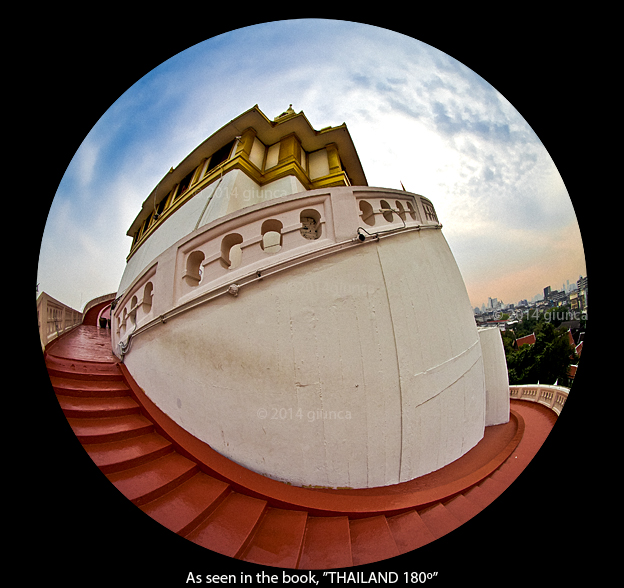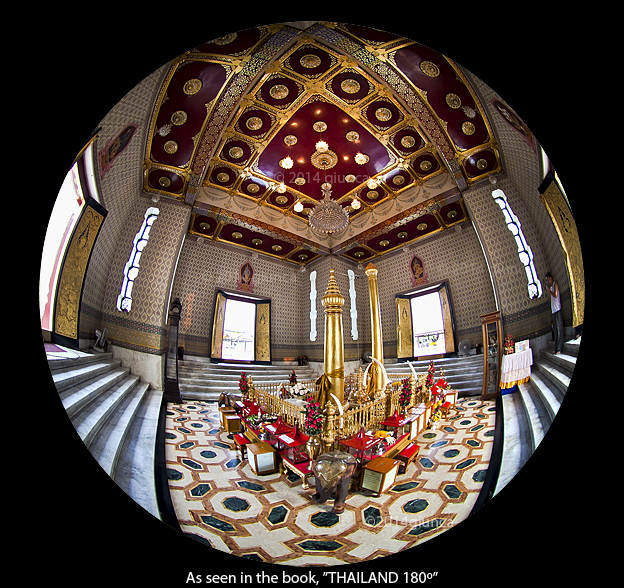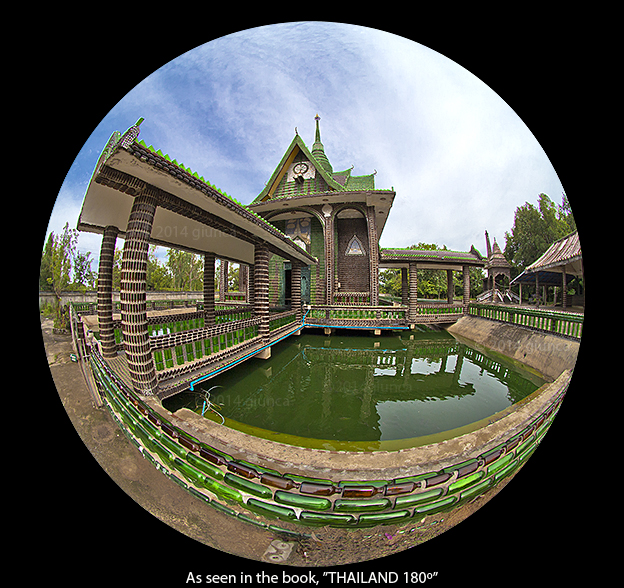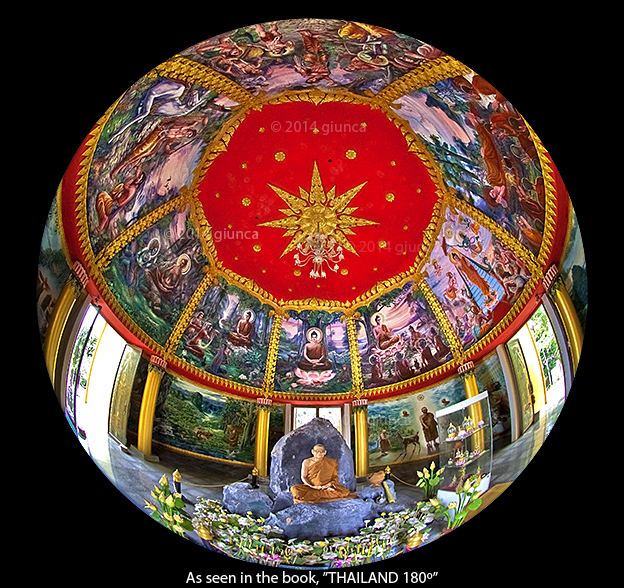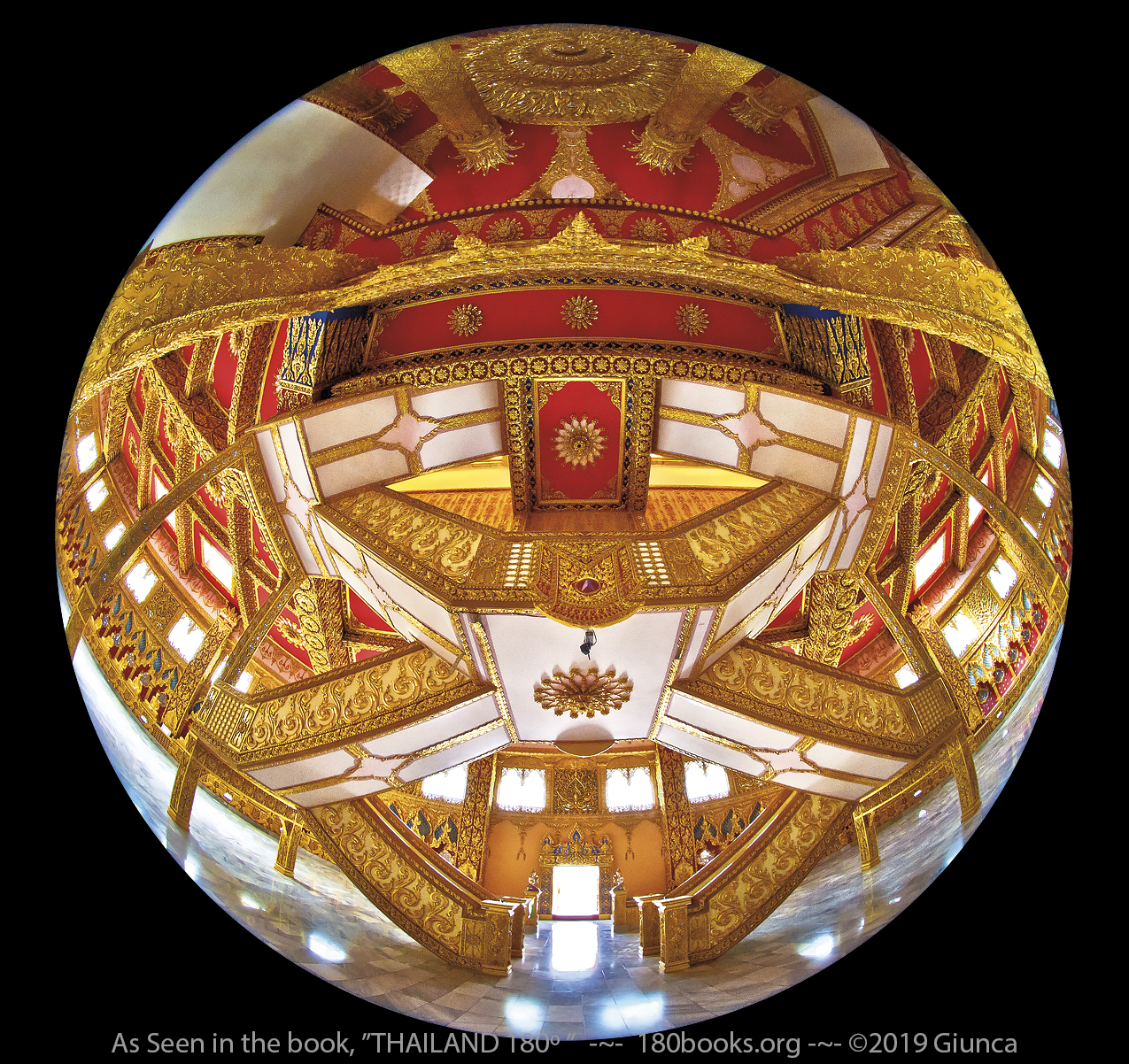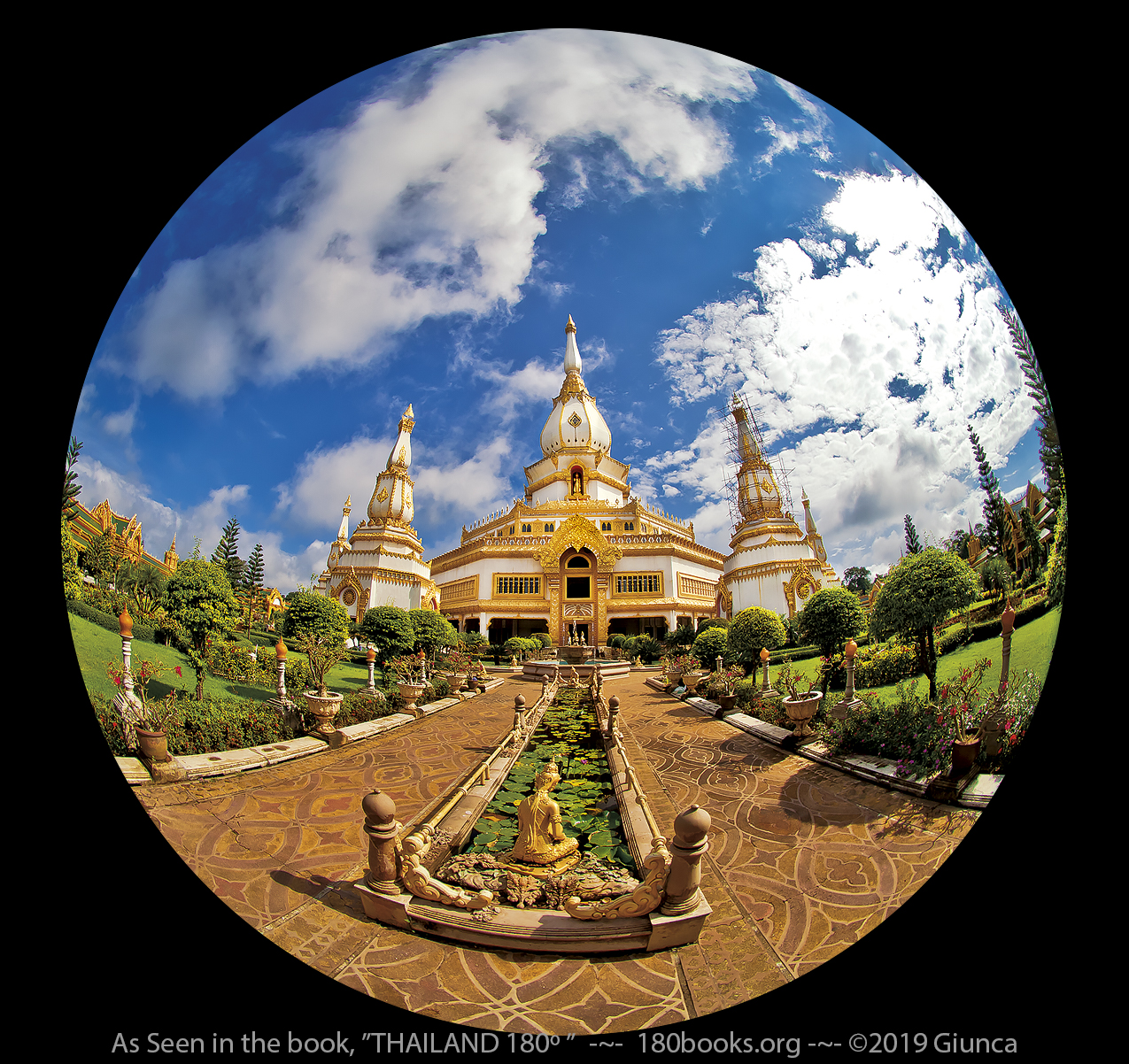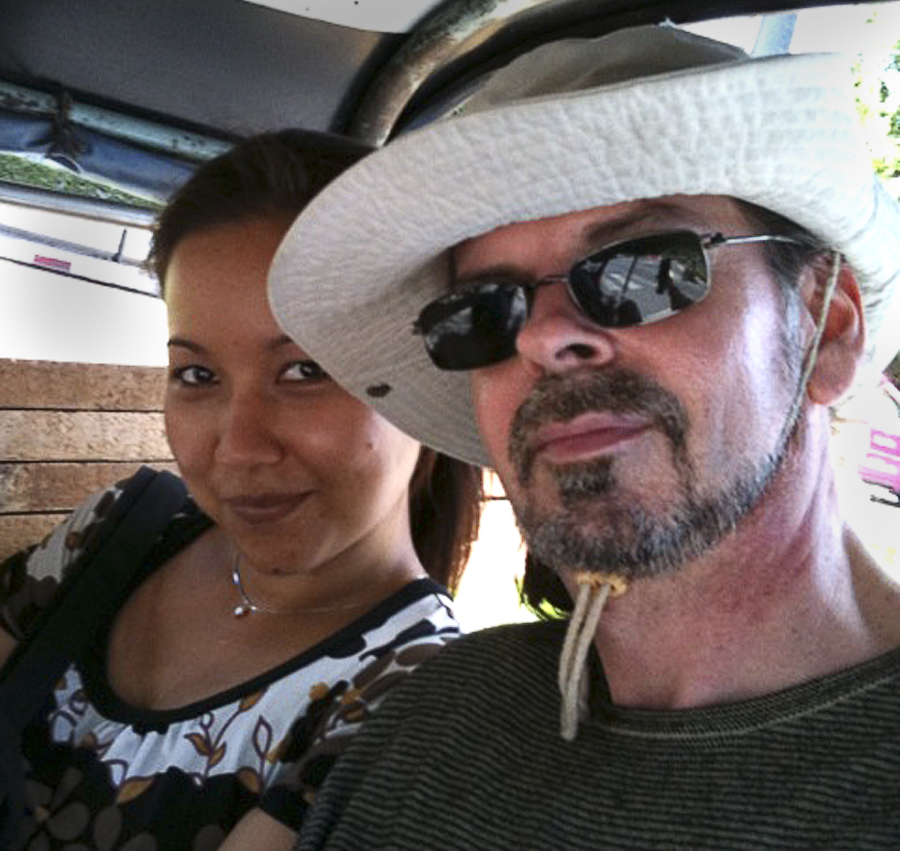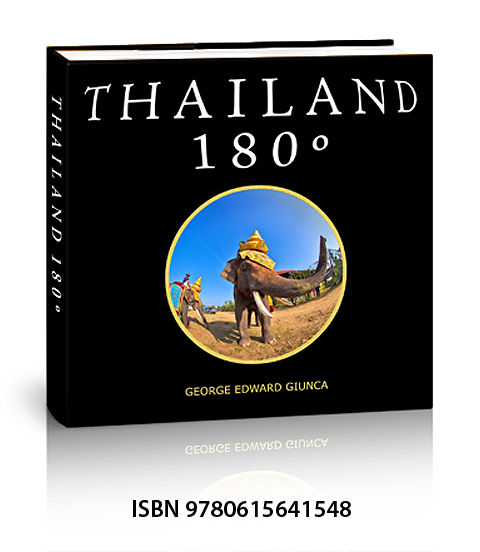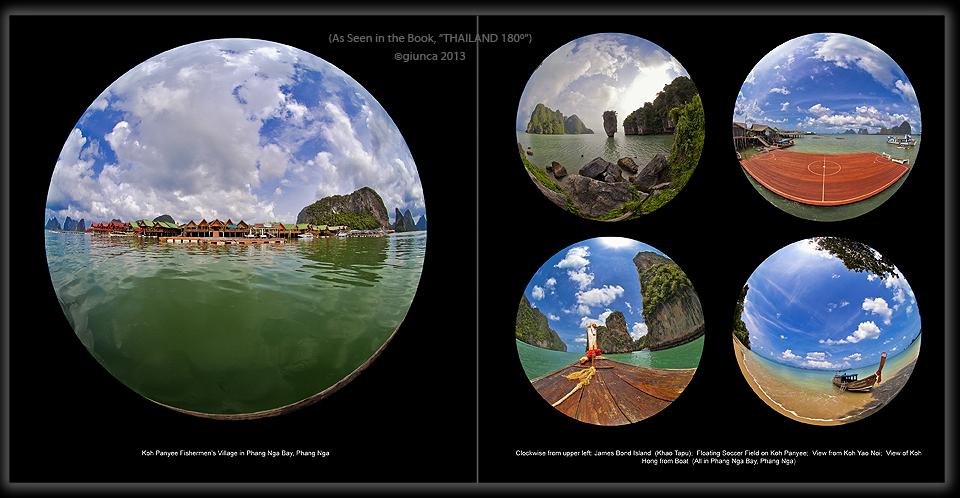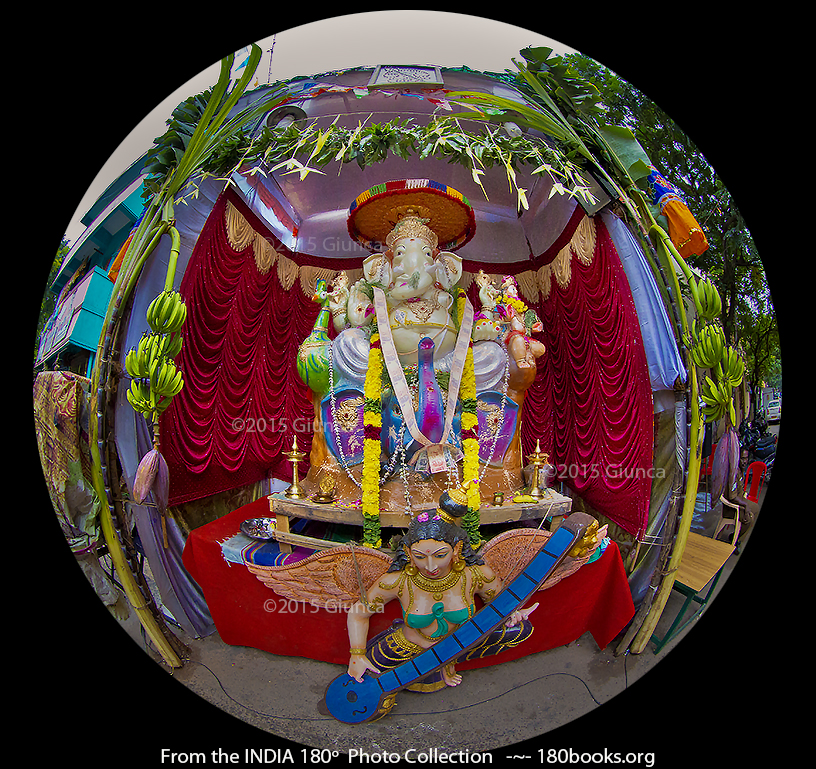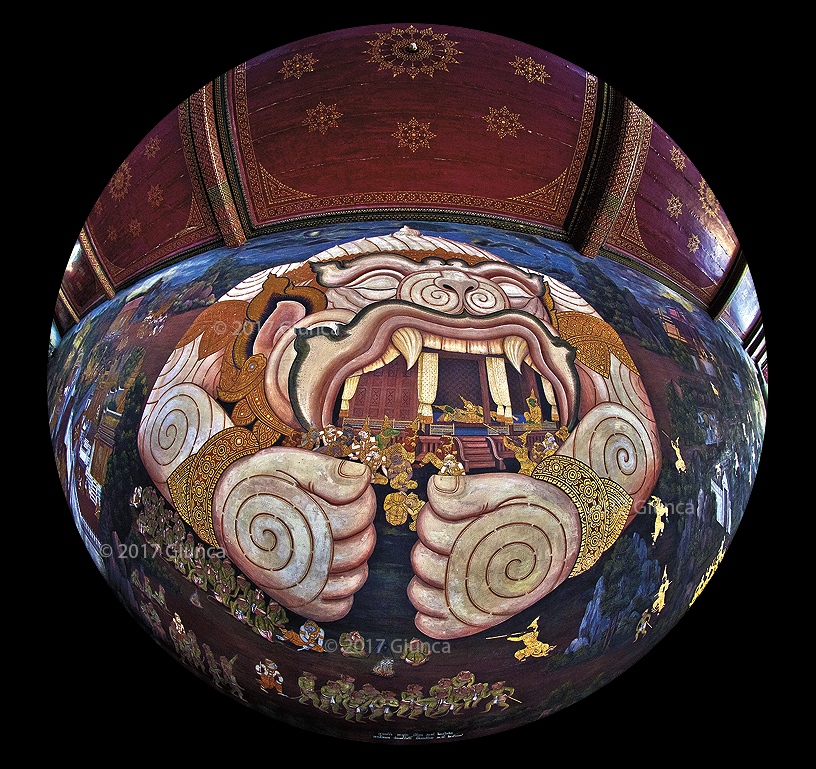A Behind the Scenes Look at Some of the Architectural Photography in THAILAND 180º, Part 1 (ภาพสถาปัตยกรรม)
(Updated February 21, 2017)
In my early years, as a photographer, I did a fair amount of architectural photography, mainly very boring exterior shots at dusk or dawn. I never really got a chance to be creative, as the clients wanted a straightforward photograph. In those days, I usually used a 4×5 view camera, and the most difficult part of the job was getting permits to block a lane of traffic or the sidewalks. Getting a chance to try out the fisheye lens was very exciting at first, but sometimes I had to walk away shaking my head because buildings of a certain height and shape are not suitable subjects for this lens.
ตอนที่เริ่มเป็นช่างภาพก็ถ่ายภาพผลงานสถาปัตยกรรมมามากพอควร ก็พวกภาพน่าเบื่อๆ ที่ต้องถ่ายตอนพนะอาทิตย์ขึ้นและตกอะไรประมาณนั้นซึ่งแล้วแต่ตามลูกค้าต้องการ ในตอนนั้นสิ่งที่ยกที่สุดคือต้องหยุดการจราจรบนท้องถนนและแม้แต่ฟุตบาทเพื่อถ่ายภาพสถาปัตยกรรมของอาคาร กาารได้ใช้ circular fisheye lens ถ่ายภาพคราวนี้น่าตื่นเต้นกว่าตอนนี้นั้นเยอะ มีหลายภาพที่ต้องส่ายหน้าและหันหลังให้ เนื่องจากเลนส์นี้ไม่เหมาะกับการถ่ายภาพอาคารสูงๆ หรือสิ่งที่มีรูปร่างเพรียวสูง
!80books Day #1
On one of the first mornings, when I finally started working on this project, I headed for the older part of Bangkok, the Rattanakosin area. It was dawn, and the light was perfect, but none of the sites were open. I spotted Wat Saket, or Golden Mountain Temple and headed towards it. By chance, a monk was opening the gate and waved me in. I took the image above on my way up but kept searching for a different angle. I reached the top, but there was not a photo to be found. I pulled out my Canon G12 and took a few shots that I felt more comfortable with, as they were the type of shots one usually finds on postcards. I was having serious doubts about making a book full of fisheye photos and started to cover every subject that day with both cameras.
The next day after I had processed all of the images, I proudly showed them to my wife to get her opinion. She scanned them quickly, but stopped at this Wat Saket fisheye and said, “Wow, that’s beautiful! What is it?” I had mixed feelings about this since every Thai person can identify this temple from a mile away. We had a long discussion about how much artistic license I can get away with in a travel book but ended up deciding that it would be an Art Travel Book, and we would break the molds. In my heart, I still wasn’t sure, but today, it’s one of my favorite photos in the book.
The Power of 180º
The next morning was overcast, but I headed back to the same area and concentrated on making interior photos. I went to check out Lak Muang, which didn’t look like much from the outside, but as the lens reveals, is amazing inside. When you visit this small shrine, it’s hard to notice the design as the steps are steep and it feels very crowded. This was a huge win for the fisheye! I wonder how many Thais that visit this shrine realize how beautiful it is. The 120º vision of the human eyes certainly can’t match a 180º lens.
รุ่งขึ้นอีกวันหนึ่งผมกลับไปในย่านเดิมพร้อมด้วยภรรยาเพื่อถ่ายรูปศาลหลักเมืองกรุงเทพ ซึ่งดูเหมือนไม่มีอะไรน่าสนใจในสถานที่เล็กๆ มีบันไดแคบและชันแห่งนี้ ผมแปลกใจเหมือนกันว่าทำไมที่นี่จึงคราคร่ำไปด้วยผู้คนมากมาย แต่ด้วย circular fisheye lens ทำให้ภาพมีมิติและมุมมองที่น่าสนใจยิ่งขึ้นและผมก็ได้ตระหนักเห็นความสวยงามของที่นี่ ยกนิ้วให้ circular fisheye lens เลย เพราะองศาการมองของคนจะมองเห็นแค่ 120º แต่องศาของเจ้าตาปลามีแนวกว้างและแนวดิ่งถึง 180º
As we planned our photo safaris, we tried to find temples that were unusual and maybe out of reach for most tourists and even most Bangkokian Thais. A temple made of beer bottles? THAT I had to see. There weren’t many photos of this on the internet and excitement mixed with doubt filled my head. It was the rainy season, and I was on a tight budget, which meant that we had to keep moving.
จากนั้นเราจึงวางแผนเพื่อเดินทางไปวัดวาอารามและสถานที่สวยงามรวมทั้งสถานที่แปลกๆ ที่นักท่องเที่ยวหรือแม้แต่คนไทยหลายคนอาจไม่เคยไปมาก่อน เช่นที่นี่ “วัดล้านขวด” มีโบสถ์ประดับตบแต่งด้วยขวดเบียร์และเครื่องดื่มชูกำลัง เราค้นหาภาพและข้อมูลทางอินเตอร์เน็ตแต่ก็ไม่พบข้อมูลมากนัก ไม่เป็นไรไปดูให้เห็นกับตากันเลยดีกว่า เรามีเวลาและงบประมาณจำกัดดังนั้นฝนตกก็ต้องตากฝนไปเสร็จแล้วจะได้ไปที่อื่นต่อ
180º On the Road
The Million Bottle Temple or Wat Pa Maha Chedi Kaew is in the small province of Si Saket, in Northeastern (Isaan) Thailand. We flew to Buriram first, then headed to the temple. It was raining, as it seemed to do every day last year and the sky and light were terrible when we arrived. We walked around for an hour trying to make as many photos as possible. The fact that there is no grass around the temple didn’t make it any more photogenic either. The temple and even the crematorium were very interesting, as they were all made of empty bottles. A breeze started to blow, and the clouds parted long enough for me to make the image of the ubosot above and then just as quickly, the sky became overcast, then more rain.
วัดล้านขวดมีอีกชื่อว่า วัดป่ามหาเจดีย์แก้ว ตั้งอยู่จังหวัดศรีสะเกษในภาคอีสาน ซึ่งเราเริ่มต้นทริปนี้ด้วยการนั่งเครื่องบินไปลงที่บุรีรัมย์เพื่อถ่ายภาพในจังหวัดบุรีรัมย์แล้วเดินทางมายังวัดนี้ เป็นช่วงฤดูฝนที่มีฝนตกทุกวัน ท้องฟ้าขมุกขมัว เราเดินไปรอบๆ โบสถ์และเมรุเผาศพ วนไปมาอยู่เป็นชั่วโมงเพื่อหามุมเหมาะๆ เราเห็นว่าใช้เวลานานพอควรแล้วและที่นี่ก็ไม่มีสวนพุ่มไม้หรือหญ้าเขียวขจีอยู่รอบๆ โบสถ์ ต่อให้ท้องฟ้าแจ่มแจ้งก็ไม่น่าจะสวยมากกว่านี้ .. (ภาพบน) ฟ้าเริ่มเปิดนิดหน่อยผมรีบกดชัตเตอร์อย่่างรวดเร็วและเราก็มุ่งหน้าไปที่อื่นต่อพร้อมกับเมฆฝนอีกระลอกที่กระหน่ำลงมา

Wat Tham Saeng Phet in Amnat Charoen, Thailand (Image from the 180books.org Photo Collection by George Edward Giunca)
Leave Nothing Unexplored
A few days later, we found ourselves in Amnat Charoen, another province in Isaan. Our target was a large outdoor reclining Buddha image, set on top of a bed of volcanic rock. It was cloudy, but the sky had clouds to give it texture and the diffused light brought out the color and detail of the large, graceful image. As we were leaving, I looked up the hill and saw a tiny golden chedi. The fisheye transformed and abstracted the chedi and I spent a lot of time walking around trying different angles. Very pleased, I started to head for the car, when my wife asked a very good question. “Aren’t you going to take a look inside?” I explained that I already had my shots, and it was time to move on, but she had already disappeared inside.
ต่อมาเราก็มาที่จังหวัดอำนาจเจริญที่อยู่ในภาคอีสานเช่นกัน เป็าหมายของเราคือพระนอนที่อยู่บนภูเขาไฟที่สงบแล้วของที่นี่ ท้องฟ้าคลื้มเช่นเคยแต่มีแสงพอที่จะช่วยส่งเสริมสีสันให้กับสิ่งที่เราจะถ่ายภาพในวันนี้ แต่พอไปถึงกลับเห็นเจดีย์องค์สีทองขนาดย่อมตั้งอยู่บนเนินเขาข้างเคียงกัน จึงเดินไปหามุมถ่ายภาพรอบเจดีย์จนได้ภาพด้านบนมา พอจะเดินกลับภรรยาทักว่าไม่เข้าไปข้างในเหรอ ผมตอบว่าผมได้ภาพแล้วและเราต้องเดินทางต่อ แต่เธอเดินหายไปด้านในแล้ว
I followed and was shocked at what I saw: Inside painted murals telling the story of the Buddha surrounded the dome on the ceiling and murals depicting the life of Luang Phor Cha, a famous monk, covered the walls. Under the rotunda was a hauntingly lifelike image of the monk in a meditative pose and a glass case displaying some ash relics left from his cremation. These pictures over-shadowed the earlier photos of the reclyning Buddha image, which had to be cut from the book, but will be available as a print in the near future.
พอผมเดินตามเข้าไปก็ถึงกับตะลึงไปกับภาพที่เห็นนี้ ด้านในที่มีภาพเขียนเล่าประวัติพระพุทธเจ้าบนเพดานโดมและภาพเขียนเกี่ยวกับประวัติหลวงพ่อชาที่ผนังด้านข้างโดยรอบ และมีรูปปั้นหลวงพ่อชาและอัฐิอยู่ตรงกลางเจดีย์ ภาพนี้ทำให้ภาพพระนอนที่ผมถ่ายตอนแรกถูกบดบังรัศมีไปจนเราไม่ได้นำมาลงหนังสือแต่ก็ยังเก็บภาพไว้
I’ll end with these photos of Phra Maha Chedi Chai Mongkol, in the province of Roi Et, in Isaan, which mysteriously became the thumbnail photo for our movie trailer.
สุดท้ายนี้คือ “พระมหาเจดีย์ชัยมงคล” ที่จังหวัดร้อยเอ็ดในภาคอีสานเช่นเคย ซึ่งอยู่ๆ ภาพนี้ก็กลายมาเป็นรูปประกอบวิดีโอตัวอย่างหนังสือของเราโดยบังเอิญ
This is yet another image that would be impossible without a fisheye. It was very dark in the chedi, but years of practice allowed me to record this at 1/2 second. (No coffee for me on photoshoots.) I should warn you that this temple is still very much underconstruction and certain parts may be closed or covered by dropclothes.
ภาพนี้เป็นภาพหนึ่งที่คุณไม่มีทางจะได้เห็นภาพที่สวยงามแบบนี้ถ้าไม่ใช้ circular fisheye lens ประกอบกับผมตั้งค่าไว้ที่ 1/2 วินาที เนื่องจากภายในเจดีย์มีแสงน้อยและท้องฟ้าครื้ม เจดีย์นี้ยังสร้างไม่เสร็จเรียบร้อยและบางส่วนยังปิดกั้นไว้เพื่อประดับตบแต่งขณะที่เราไปถ่ายทำช่วงกลางปี 2554
One Hour of Cleaning Beats Five Hours of Retouching
When I saw the beautiful exterior, I almost cried due to all of the junk, building supplies and signs around it. We spent a good hour trying to clear everything we could, and Fon quickly hid the signs while I took the photo. (Thais seem to love putting signs all around, which always adds another challenge.) The sky and light were just too beautiful to walk away from.
ภายนอกเจดีย์นั้นก็สวยงามมากๆ และเราก็ได้ภาพด้านบนมาหลังจากท้องฟ้าเปิด แดดจ้าและมีเมฆเป็นหย่อมๆ จนยากที่จะเดินกลับไปโดยไม่เก็บภาพนี้ แต่แทบจะร้องไห้เพราะมีทั้งกองขยะจากงานก่อสร้างที่มุมหนึ่งและยังมีป้ายบอกต่างๆ รวมทั้งป้ายกฎระเบียบการเยี่ยมมชมป้ายใหญ่ทีเดียว ซึ่งเราต้องเคลื่อนย้ายสิ่งเหล่านี้ออกเท่าที่เราทำได้ ภรรยาผมก็ช่วยนำป้ายต่างๆ โดยเฉพาะอันใหญ่นั่นหลบไปหลังเสาเพื่อให้ผมถ่ายภาพ (ดูหมือนว่าหลายถานที่ที่เราไปมักจะมีป้ายบอกนี่นั่นไปทั่ว ซึ่งเราก็นำออกก่อนถ่ายภาพและนำกลับมาวางไว้ให้ใหม่หลังถ่ายภาพเสร็จ – ยกเว้นขยะนะครับ เรานำขยะออกไปทิ้งให้เลย)
Ahh, done with my blog until next week-now back to planning our next book!
และก็ได้เวลาวางมือจากบล๊อกเพื่อวางแผนทำหนังสือเล่มต่อไปแล้วล่ะครับ!
!!..คลิ๊กแผนที่..!! ดูภาพสวยๆ อ่านบล็อกสถานที่ท่องเที่ยวจาก THAILAND 180º ได้นะคะ อัพเดทเพิ่มเติมตลอดค่ะ
If you enjoyed this story, subscribe using the “Subscribe” button below, or visit our facebook fan page to comment Here
We’d LOVE to hear from you!
ผู้ติดตามอ่านบล็อก สามารถติดตามอัพเดทโพสต์บล็อกได้โดยสมัครสมาชิกที่บล็อกนี้ หรือ กดไลค์เฟสบุ๊คเพจของเราที่นี่ Here
Blog : Thai by Apisatha Hussadee Giunca
Blog : English by George Edward Giunca
About the Authors
Photographer George Edward Giunca, and his Thai wife, Apisatha, have traveled around Thailand armed with a circular fisheye lens to create a photo essay on the rich cultural diversity, and abundant natural beauty of the Kingdom of Thailand. Fleeing from angry water buffaloes, slapping huge mosquitoes, watching exotic festivals and religious rituals, gorging on delicious spicy food, applying aloe vera cream to sunburned skin, wading through rice paddies, getting drenched to the bone by heavy monsoon rains, and gawking at breath-taking scenery; made it a journey of epic proportions! The result is the book, THAILAND 180º. Later, they traveled extensively through Myanmar, Malaysia, and India, gathering a massive collection of 180º photos. They currently live in Chiang Mai where they continue to blog and are now working on a CHIANG MAI 180º book.
Here’s How to Order Your Copy of THAILAND 180º Collectors EditionToday!
In Thailand —>>>http://www.thailand180.com/thaiorder.html
The Rest of the world: We are offering our book on Amazon.com, below list price and I’ll pay for the shipping within the United States! http://amzn.to/1knDPRR
Not Familiar with Our Book???
This show details the origin of 180 Books, a series of art/travel books illustrated with a circular fisheye lens. By using infographics, pictures from our THAILAND 180º book, and never seen before images from our vault, we’ll demonstrate this unique lens and present our unique books.
Also, because there’s nothing to watch on TV, here’s a trailer about our book, “THAILAND 180”
Above is an interactive map of Thailand. If you click on a marker it reveals a photo from our THAILAND 180º book and a link to our blog article about the photo. Go Ahead~ Start Exploring ~Have Some Fun!


